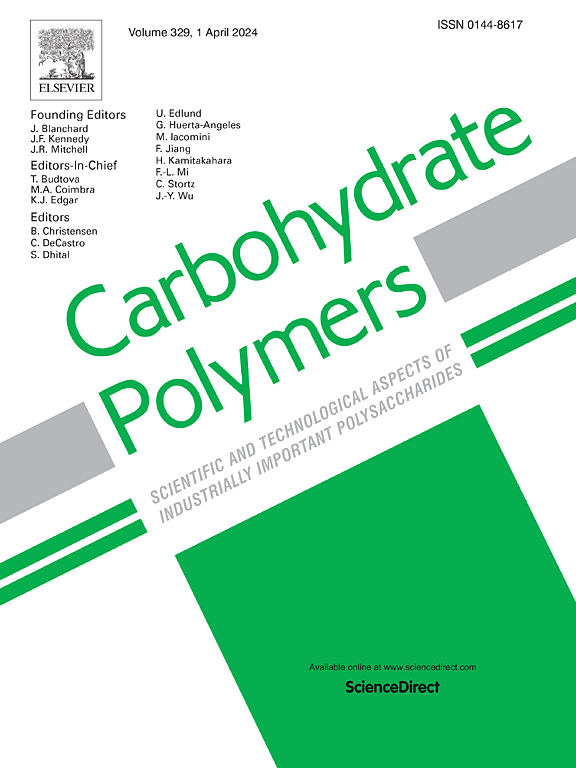Enhancing the output of cellulose-based triboelectric nanogenerators via dual interfacial polarization effects
IF 12.5
1区 化学
Q1 CHEMISTRY, APPLIED
引用次数: 0
Abstract
Cellulose-based triboelectric nanogenerators (TENGs) have garnered significant attention in wearable electronics due to their biodegradability and abundant availability. However, the near-electroneutrality of cellulose hinders its advancement and broader application in high-performance TENGs. In this study, the triboelectric polarity of cellulose nanofibers (CNF) is modified by grafting different functional groups, wherein the incorporation of polar sulfonic acid groups enhances the deep trap density on the surface of CNF by an order of magnitude, reduces charge dissipation rates, and increases surface potential by nearly 200 % compared to untreated CNF. Subsequently developed cellulose-based bilayer triboelectric materials utilize the dielectric difference between functionalized cellulose and Ecoflex/graphene, as well as that between Ecoflex and graphene, to induce efficient dual interfacial polarization, resulting in a cellulose-based triboelectric material with excellent charge densities as high as 125 μC/m2—surpassing the most electronegative commercially available fluoroethylene propylene. This work presents a simple, scalable method to fabricate high-performance cellulose-based TENGs, highlighting the immense potential of cellulose in wearable electronics.
通过双界面极化效应提高纤维素基摩擦电纳米发电机的产量
基于纤维素的摩擦电纳米发电机(TENGs)由于其可生物降解性和丰富的可用性而在可穿戴电子领域引起了极大的关注。然而,纤维素的近电中性阻碍了其在高性能teng中的发展和广泛应用。在本研究中,通过接枝不同的官能团来修饰纤维素纳米纤维(CNF)的摩擦电极性,其中极性磺酸基团的加入使CNF表面的深阱密度提高了一个数量级,降低了电荷耗散率,与未经处理的CNF相比,表面电位增加了近200%。随后开发的基于纤维素的双层摩擦电材料利用功能化纤维素和Ecoflex/石墨烯之间以及Ecoflex和石墨烯之间的介电差来诱导有效的双界面极化,从而产生具有优异电荷密度的基于纤维素的摩擦电材料,其电荷密度高达125 μC/m2,超过了电负性最强的商用氟丙烯。这项工作提出了一种简单、可扩展的方法来制造高性能的纤维素基teng,突出了纤维素在可穿戴电子产品中的巨大潜力。
本文章由计算机程序翻译,如有差异,请以英文原文为准。
求助全文
约1分钟内获得全文
求助全文
来源期刊

Carbohydrate Polymers
化学-高分子科学
CiteScore
22.40
自引率
8.00%
发文量
1286
审稿时长
47 days
期刊介绍:
Carbohydrate Polymers stands as a prominent journal in the glycoscience field, dedicated to exploring and harnessing the potential of polysaccharides with applications spanning bioenergy, bioplastics, biomaterials, biorefining, chemistry, drug delivery, food, health, nanotechnology, packaging, paper, pharmaceuticals, medicine, oil recovery, textiles, tissue engineering, wood, and various aspects of glycoscience.
The journal emphasizes the central role of well-characterized carbohydrate polymers, highlighting their significance as the primary focus rather than a peripheral topic. Each paper must prominently feature at least one named carbohydrate polymer, evident in both citation and title, with a commitment to innovative research that advances scientific knowledge.
 求助内容:
求助内容: 应助结果提醒方式:
应助结果提醒方式:


